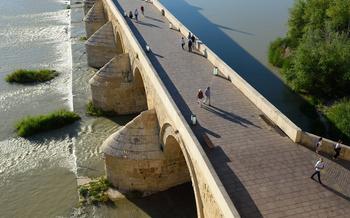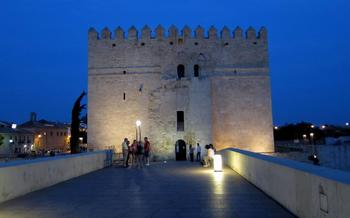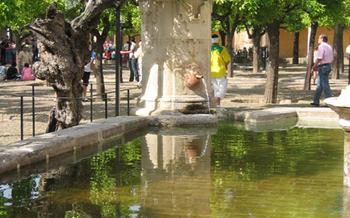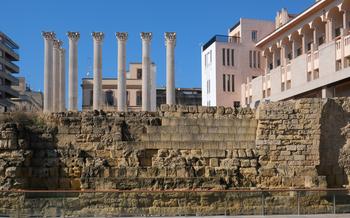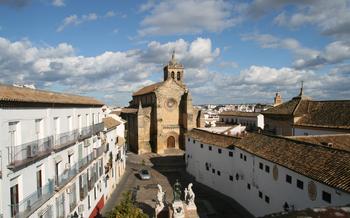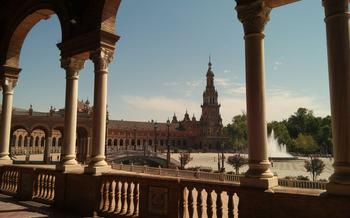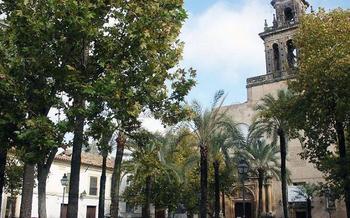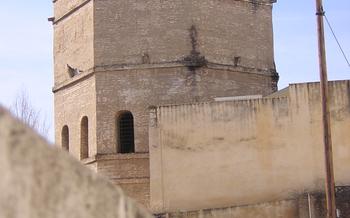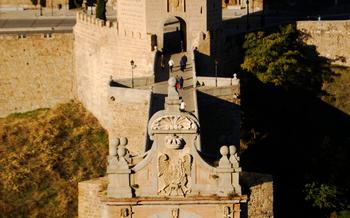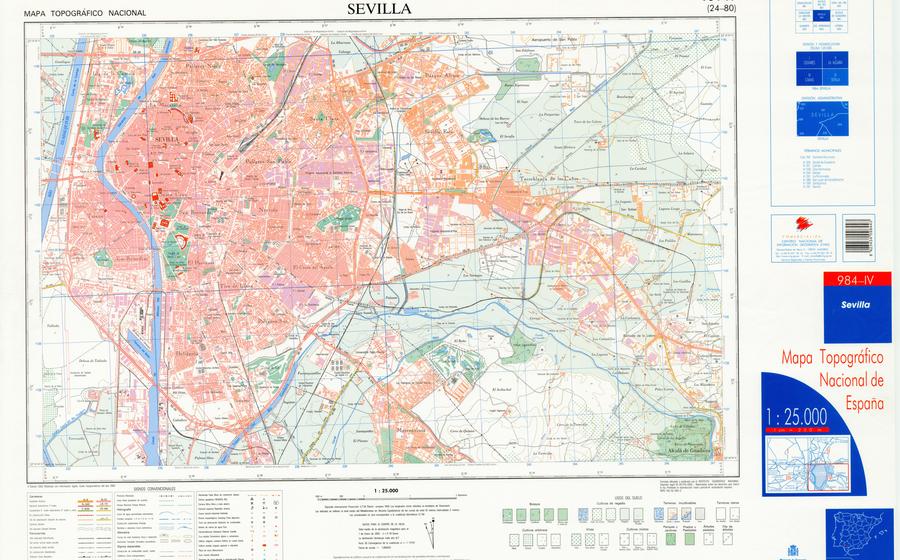
Italica Archaeological Site
- Italica Archaeological Site
- History of Italica
- Foundation and Early History
- Roman Rule and its Importance
- Decline and Abandonment
- Archaeological Excavations
- Main Features of the Site
- The Amphitheater
- The Theater
- The Necropolis
- The City Walls
- Mosaics and Frescoes
- Sculptures and Statues
- Other Buildings and Structures
- Virtual Reality Experience
- Museum and Interpretation Center
- Events and Activities
- Insider Tip
Italica Archaeological Site
In the heart of Andalusia, just a short distance from Seville, lies the fascinating Italica Archaeological Site, a testament to the rich history and legacy of ancient Rome. Founded in 206 BC by the Roman general Scipio Africanus, Italica holds the distinction of being the first Roman city established on the Iberian Peninsula. This remarkable site offers a glimpse into the grandeur and complexity of Roman urban planning, boasting well-preserved ruins, intricate mosaics, and impressive architectural features. As you wander through the ancient streets, you'll encounter remnants of a once-thriving metropolis, where gladiators battled in the grand amphitheater, merchants traded in the bustling marketplace, and citizens gathered in the impressive theater to witness captivating performances. Italica stands as a testament to the enduring influence of Roman civilization and invites you on a journey through time to discover its captivating stories and secrets.
Location and how to get there
Italica is conveniently located just 9 kilometers northwest of Seville, making it easily accessible by car or public transportation. To reach the site by car, take the A-4 motorway towards Cordoba and exit at junction 544, following the signs for Santiponce. Alternatively, you can take the C-5 bus from Seville's Plaza de Armas bus station, which will drop you off right at the entrance to the archaeological site.
Opening hours and ticket prices
The Italica Archaeological Site is open to the public from Tuesday to Sunday, with varying hours depending on the season. During the summer months (April to September), the site is open from 9:00 AM to 8:00 PM, while in the winter months (October to March), it operates from 9:00 AM to 6:00 PM. The entrance fee for adults is 50 euros, while children under 12 and EU citizens over 65 years of age enjoy free admission.
History of Italica
Foundation and Early History
Italica, founded in 206 BC, was the first Roman colony in Hispania, and one of the first outside Italy. It was founded by Scipio Africanus, the Roman general who defeated Hannibal in the Second Punic War. The city was built on a strategic location, near the Guadalquivir River, which allowed it to control the trade routes between the Iberian Peninsula and the rest of the Roman Empire. Italica quickly became one of the most important cities in Hispania, and it played a crucial role in the Romanization of the region.
Roman Rule and its Importance
During the Roman period, Italica flourished and became one of the most important cities in the province of Hispania Baetica. It was granted the status of a municipium, which allowed its citizens to enjoy Roman citizenship and various privileges. Italica was home to a large population of Roman settlers, who brought with them their culture, customs, and traditions. The city was also a major center of trade and commerce, and it was known for its production of olive oil, wine, and textiles. Italica was also the birthplace of several prominent Roman figures, including the emperors Trajan and Hadrian.
Decline and Abandonment
The decline of Italica began in the 3rd century AD, when the Roman Empire started to experience political and economic instability. The city was sacked by the Vandals in the 5th century AD, and it was finally abandoned in the 7th century AD, after the Muslim conquest of Hispania. The ruins of Italica were rediscovered in the 18th century AD, and they have been extensively excavated since then. Today, Italica is one of the most important archaeological sites in Spain, and it offers a fascinating glimpse into the Roman past of the Iberian Peninsula.
Archaeological Excavations
The history of archaeological excavations at Italica dates back to the 18th century. In the early 1900s, systematic excavations began under the direction of the Spanish archaeologist José María de Osuna. These early excavations revealed the remains of the amphitheater, the theater, and several other structures. In the 1970s, excavations were resumed by the University of Seville, which uncovered a large portion of the city, including the necropolis and the city walls.
Major discoveries and findings during these excavations include well-preserved mosaics, sculptures, and inscriptions. These finds have shed light on the daily life, culture, and art of the ancient Roman city. Ongoing research and projects at Italica focus on further excavating and studying the site, as well as conserving and restoring the existing remains.
Main Features of the Site
The Italica Archaeological Site showcases a captivating array of ancient structures that offer a glimpse into the grandeur of Roman life. Among the most notable features are the amphitheater, theater, necropolis, and the imposing city walls.
-
The Amphitheater: This awe-inspiring structure is a reminder of the city's penchant for entertainment. Excavated in the 20th century, the amphitheater could accommodate up to 25,000 spectators who gathered to witness gladiatorial contests, chariot races, and other thrilling events. Its well-preserved seating tiers, stage, and underground chambers provide a tangible connection to the excitement of ancient Roman spectacles.
-
The Theater: A short walk from the amphitheater, the theater stands as a testament to Italica's cultural significance. Built in the 1st century BC, it could accommodate up to 6,000 spectators who enjoyed theatrical performances, musical concerts, and poetry recitals. The theater's impressive stage, adorned with intricate carvings, evokes the vibrant artistic scene that flourished in Roman Italica.
-
The Necropolis: Just outside the city walls, the necropolis serves as a poignant reminder of the city's inhabitants. This extensive burial ground features a variety of tombs, including family mausoleums, individual graves, and columbaria (pigeonhole tombs for cremated remains). The necropolis offers a glimpse into the funerary customs and beliefs of ancient Italica.
-
The City Walls: Encircling the ancient city, the imposing city walls stand as a testament to Italica's strategic importance. Constructed in the 3rd century BC, the walls feature a series of towers and gates that once provided both defense and controlled access to the city. Walking along the well-preserved sections of the walls offers breathtaking panoramic views of the archaeological site and the surrounding countryside.
The Amphitheater
With a size rivaling the iconic Colosseum in Rome, the amphitheater of Italica is one of its most impressive landmarks and a testament to the grandeur of the ancient city. It could accommodate up to 25,000 spectators, eager to witness the thrilling spectacles that unfolded within its walls.
The amphitheater boasts remarkable architectural features, including a well-preserved elliptical arena, surrounded by tiers of seating rising steeply from the ground. The seating areas were divided into sections, with the lower rows reserved for the elite, while the upper tiers were designated for the common folk.
The amphitheater was the stage for a variety of events, primarily gladiatorial contests, which were hugely popular in Roman society. These brutal battles, often fought to the death, showcased the prowess and skill of the gladiators, who were either slaves, criminals, or prisoners of war.
The Theater
The theater of Italica is one of the most impressive and well-preserved structures at the site. Built during the 1st century AD, it could accommodate up to 3,000 spectators. Its architectural features are typical of Roman theaters, with a semicircular orchestra, a stage, and tiered seating. The stage is decorated with elaborate columns, statues, and niches, creating a visually stunning backdrop for performances.
The theater was used for a variety of events, including plays, comedies, and musical performances. It also served as a venue for public meetings and assemblies. The acoustics of the theater are remarkable, and even today, it is used for occasional performances and events, allowing visitors to experience the atmosphere of a Roman theater firsthand.
The Necropolis
Located just outside the city walls, the necropolis of Italica is an extensive burial ground that offers a glimpse into the funerary practices and beliefs of the ancient Romans. Spread over a wide area, the necropolis contains a variety of tombs and burials, ranging from simple graves to elaborate mausoleums. Some of the tombs are decorated with intricate carvings, frescoes, and mosaics, providing valuable insights into the lives and culture of the people buried here.
Among the most notable tombs in the necropolis is the Hypogeum of the Columns, a subterranean burial chamber that features a series of Doric columns supporting a vaulted ceiling. The tomb is believed to have been built in the 2nd century AD and was likely used by a wealthy family. Another impressive tomb is the Mausoleum of the Gladiator, which features a relief depicting a gladiator in combat. The tomb is thought to belong to a gladiator who was buried with his weapons and armor.
The necropolis also contains a number of columbaria, or pigeonhole tombs, which were used to store urns containing the cremated remains of the deceased. These columbaria are often decorated with niches and inscriptions, providing information about the individuals buried within.
Artifacts and grave goods found in the necropolis include pottery, glass, jewelry, and coins, which offer clues about the daily lives and customs of the people of Italica. These artifacts are displayed in the museum and interpretation center, providing visitors with a deeper understanding of the ancient city and its inhabitants.
The City Walls
The city walls of Italica were an essential part of the ancient city's defenses. They were constructed in the 1st century BC and extended for approximately 5 kilometers, enclosing an area of approximately 50 hectares. The walls were built with large blocks of limestone and were up to 10 meters high in some sections. They featured several towers and gates, which allowed for controlled access to the city. The walls also had a moat, which further strengthened the city's defenses.
The defensive features of the Italica city walls included towers, gates, and a moat. The towers were strategically placed along the walls to provide a commanding view of the surrounding area and to allow defenders to launch projectiles at attackers. The gates were heavily fortified and could be closed to prevent entry into the city. The moat, which was located outside the walls, served as an additional obstacle for attackers.
The towers and fortifications of the Italica city walls were impressive feats of engineering. The towers were typically square or rectangular in shape and had multiple stories. Some of the towers were also equipped with ramps or stairs, which allowed defenders to reach the upper levels. The fortifications included battlements, which provided protection for the defenders, and crenellations, which allowed them to launch projectiles.
Mosaics and Frescoes
The remains of Italica are particularly rich in well-preserved mosaics and frescoes, which offer valuable insights into the artistic traditions and craftsmanship of the Roman period. These intricate artworks adorn the floors and walls of many buildings, including private homes, public structures, and religious sites.
The mosaics, created using small, colorful tiles called tesserae, depict a wide range of subjects, including mythological scenes, geometric patterns, and everyday life. Some of the most notable examples include the "Fish Mosaic" in the House of the Planetarium, the "Orpheus Mosaic" in the House of Orpheus, and the "Hunting Mosaic" in the House of the Hunting Nymph.
The frescoes, on the other hand, are painted directly onto the walls using pigments and water. They showcase a variety of techniques, from simple line drawings to more elaborate compositions with shading and perspective. Common themes include mythological figures, landscapes, and historical events.
The mosaics and frescoes of Italica offer a glimpse into the artistic sensibilities and daily life of the ancient Romans. They are a testament to the skill and creativity of the artisans who created them and serve as a valuable resource for archaeologists and historians studying the Roman period.
Sculptures and Statues
Among the many treasures unearthed at Italica, the sculptures and statues stand out for their remarkable artistry and historical significance. These works of art, crafted from various materials such as marble, bronze, and limestone, offer a glimpse into the skilled craftsmanship and rich cultural heritage of the ancient Roman city.
One of the most notable sculptures is the marble statue of Emperor Trajan, which portrays the Roman ruler in a majestic pose, exuding both power and benevolence. Other notable sculptures include the bronze statue of the goddess Venus, which showcases the delicate beauty and grace of the Roman deity, and the marble bust of the philosopher Seneca, a native of Italica who made significant contributions to Stoic philosophy.
These sculptures and statues not only serve as historical artifacts but also provide valuable insights into the religious beliefs, cultural influences, and artistic traditions of ancient Italica. They depict mythological figures, such as Hercules, Bacchus, and Mercury, as well as prominent individuals from Roman history, including emperors, generals, and statesmen.
The statues and sculptures at Italica are a testament to the artistic prowess and cultural sophistication of the ancient Roman civilization. They offer a unique opportunity to admire the skill and creativity of the Roman artisans and to gain a deeper understanding of the rich history and cultural heritage of this remarkable archaeological site.
Other Buildings and Structures
In addition to the amphitheater, theater, necropolis, and city walls, Italica boasts a wealth of other intriguing structures that provide a glimpse into the city's daily life and social organization. Among the notable buildings are the public baths, known as thermae, which played a crucial role in Roman society. The well-preserved remains of these complexes showcase intricate heating systems, pools of varying temperatures, and opulent decorations, attesting to the importance of bathing rituals in Roman culture.
Temples and religious structures are also scattered throughout the site, reflecting the diverse religious beliefs of Italica's inhabitants. The Temple of Diana, dedicated to the Roman goddess of hunting, stands as a testament to the city's devotion to its patron deity. Other temples dedicated to deities such as Venus, Mercury, and Hercules further underscore the religious diversity that characterized Roman society.
Markets and commercial areas, known as macellum, were essential hubs of economic activity in Italica. The excavated remains of these bustling marketplaces reveal rows of shops, storage facilities, and public spaces where merchants displayed their wares and conducted business. These areas provide valuable insights into the economic organization and trade networks that sustained the city's prosperity.
Virtual Reality Experience
Immerse Yourself in Ancient Italica with Cutting-Edge Technology
Italica comes alive like never before with the introduction of virtual reality (VR) experiences. Visitors can don VR headsets and step back in time, witnessing the bustling streets, grand spectacles, and vibrant life of the ancient Roman city.
The VR tour takes you on a journey through Italica's most iconic landmarks, including the amphitheater, theater, and city walls. You'll witness gladiatorial contests, attend theatrical performances, and explore the daily lives of the city's inhabitants.
This cutting-edge technology enhances the visitor experience by providing a unique and immersive way to engage with the history and culture of Italica. It's a must-try for anyone seeking a truly unforgettable experience at this remarkable archaeological site.
Museum and Interpretation Center
At the Italica Archaeological Site, visitors can delve deeper into the history and significance of the ancient Roman city by visiting the on-site museum and interpretation center. Located close to the main entrance, this facility houses a wealth of artifacts, displays, and educational exhibits that provide insights into the daily lives, customs, and culture of Italica's inhabitants.
The museum showcases a diverse collection of artifacts unearthed during archaeological excavations, including pottery, coins, jewelry, tools, and sculptures. These objects offer glimpses into various aspects of Roman life, from domestic activities to religious practices and economic pursuits. Interactive displays and multimedia presentations further enhance the visitor experience, bringing the ancient city to life through engaging storytelling and historical reenactments.
The interpretation center serves as a valuable resource for understanding the urban layout, architecture, and social organization of Italica. Detailed maps, models, and reconstructions help visitors visualize the city's original appearance and its evolution over time. Informative panels provide historical context and explanations, shedding light on the city's foundation, its role as a prominent Roman municipality, and the factors that led to its decline and eventual abandonment.
Educational programs and activities are regularly conducted at the museum and interpretation center, catering to visitors of all ages. Guided tours led by knowledgeable experts offer a deeper understanding of the site's history and significance, while workshops and hands-on activities provide opportunities for interactive learning and engagement. These educational initiatives aim to foster a greater appreciation for the rich cultural heritage of Italica and its enduring legacy.
Events and Activities
Italica Archaeological Site offers a wide range of events and activities that enhance the visitor experience and bring history to life. Guided tours are available in various languages, led by knowledgeable guides who share insights into the site's history, architecture, and significance. Thematic visits focus on specific aspects of Italica, such as its gladiatorial contests, daily life, or religious practices.
For a more immersive experience, workshops and reenactments are organized throughout the year. These events allow visitors to participate in hands-on activities, learn about ancient crafts and customs, and even dress in traditional Roman attire. Visitors can witness gladiatorial combat demonstrations, sample Roman cuisine, and engage in interactive storytelling sessions.
Italica also hosts festivals and cultural events that celebrate its rich heritage. The annual Italica Festival, held in the summer, features live music, dance performances, historical reenactments, and a lively market showcasing local crafts and products. Other events include theater productions, concerts, and exhibitions that highlight the site's cultural significance and connection to the present day.
Insider Tip
To fully appreciate the tranquility and serenity of Italica, plan your visit during the off-season or on a weekday when the crowds are thinner. This will allow you to wander through the ancient ruins at your own pace, soak in the atmosphere, and capture stunning photographs without the distraction of throngs of tourists.
Make the most of your time in the region by combining your visit to Italica with other nearby attractions. The bustling city of Seville, with its iconic landmarks like the Alcázar and the Cathedral, is just a short drive away. Consider exploring the charming town of Santiponce, located adjacent to the archaeological site, where you can delve deeper into the history of Italica and savor delicious local cuisine.
For photography enthusiasts, Italica offers a wealth of opportunities to capture unique and evocative images. The golden hour, just before sunset, casts a warm and magical glow on the ruins, creating stunning photo opportunities. Experiment with different angles and perspectives to capture the grandeur of the amphitheater, the intricate details of the mosaics, and the serene beauty of the necropolis.
